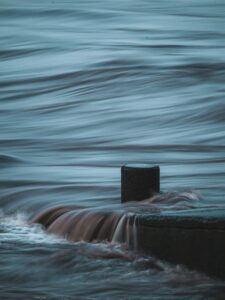Hidden Flaws

In the early 1960s, at the height of the Cold War, the USS Thresher was the fastest and quietest attack submarine in the world. From the time of its commission at Portsmouth, New Hampshire in 1960, the Thresher easily tracked Soviet subs while remaining completely undetected by the enemy. It represented the cutting-edge technology of the day and was widely considered the undisputed champion of the undersea.
Then, on April 10, 1963, the Navy was rocked to its core. The Navy’s premier nuclear-powered attack submarine, the USS Thresher, was lost with all hands (129 officers, sailors, and civilians) while conducting its maximum depth dive tests.
What happened? Was there a major malfunction with its nuclear reactor? Was there an undersea collision? No. Something far less apparent took place.
The Thresher had just returned to sea in 1962 after being inspected and repaired. But tiny cracks in its welds had gone overlooked. No problem, right? Such would be the case on any other vessel. But at the Thresher’s maximum depth there is 80,000 pounds of pressure per square inch all over its hull. Under that kind of pressure, even the tiniest crack will prove catastrophic. At maximum test depth these tiny ruptures allowed water to shoot in with a force that could cut through concrete. The water shorted the sub’s drive system. Then, when the ship’s captain, LCDR John Wesley Harvey, ordered its ballast tanks to be filled with air – to cause the sub to rise to the surface – ice quickly formed on the little strainers that covered the air valves. This immediately stopped the flow of air, and the sub sank deeper and deeper until it reached crush depth and imploded.
What destroyed the USS Thresher? Was it a flawed vessel? Yes, it was. But it’s not fair to focus exclusively on the Thresher’s tiny flaws without highlighting the immense pressure of the ocean depths that brought those flaws to light.
In the same way people are flawed – all people. We all have tiny fractures in our character and in our faith. It’s part of our fallen nature. Under normal conditions and a manageable workload these flaws can go undisclosed and safely hidden away. But apply enough hardship and pressure and the flaws will quickly surface. Under extreme circumstances any person will buckle and crack.
Therefore, be slow in your judgment of others who have fallen and give heed to your own flaws and limitations. The Scripture tells us to “judge not” (Matthew 7:1-5) and “to watch ourselves” when correcting a fallen brother (Galatians 6:1). Given the same hardships and temptations, perhaps we would have fared no better.
PRAYER: Dear Father in Heaven, help me not to criticize my brother until I have walked a mile in his shoes. Amen.







